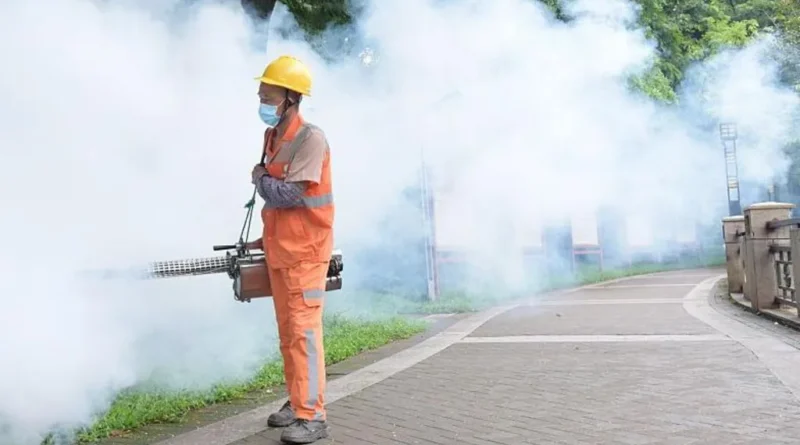China Battles 7,000 Chikungunya Virus Cases in Guangdong
China Grapples with Rapid Spread of Chikungunya Virus in Guangdong Province
China is facing a significant outbreak of the chikungunya virus, with over 7,000 cases reported across Guangdong province since July. The situation has prompted authorities to implement stringent containment measures reminiscent of those used during the COVID-19 pandemic, including mandatory hospitalization for infected patients and aggressive mosquito control efforts.
The city of Foshan has been the hardest hit, where patients diagnosed with the chikungunya virus are required to stay in hospitals under mosquito net protection. They are only discharged after testing negative or completing a mandatory seven-day isolation period. The virus, transmitted through the bite of infected Aedes mosquitoes, causes high fever and debilitating joint pain, which in some cases can persist for months or even years. While chikungunya is relatively rare in China, it is endemic in parts of South Asia, Southeast Asia, and Africa.
How Far Has the Outbreak Spread?
Beyond Foshan, at least 12 other cities in Guangdong have reported infections, with nearly 3,000 new cases emerging in just the past week. Hong Kong confirmed its first case—a 12-year-old boy who developed symptoms after traveling to Foshan in July. Unlike COVID-19, the chikungunya virus does not spread directly between humans; transmission occurs only when a mosquito bites an infected person and then bites others.
Health officials emphasize that most cases have been mild, with 95% of patients recovering within a week. However, the unfamiliarity of the disease in China has sparked public concern. On Weibo, China’s popular social media platform, users expressed alarm, with one commenting, “This is terrifying—the long-term joint pain sounds unbearable.” The U.S. Centers for Disease Control and Prevention (CDC) has advised travelers to Guangdong to take extra precautions against mosquito bites.
China’s Aggressive Mosquito Control Strategy
To curb the outbreak, Guangdong authorities have launched a multi-pronged attack on mosquito breeding grounds. Residents have been ordered to eliminate stagnant water—common in flower pots, unused bottles, and even coffee machines—or face fines of up to 10,000 yuan ($1,400). In Foshan, officials have deployed innovative solutions, including:
- Releasing mosquito-eating fish into lakes to target larvae
- Introducing predatory “elephant mosquitoes” that consume smaller disease-carrying mosquitoes
- Using drones to identify and treat stagnant water sources in hard-to-reach areas
Some neighboring cities initially imposed 14-day quarantines for travelers from Foshan, though these restrictions were later lifted. The measures have drawn mixed reactions, with some critics comparing them to extreme pandemic-era policies. “These rules feel familiar, but are they really needed for a mosquito-borne virus?” questioned one Weibo user.
Understanding Chikungunya: Symptoms and Risks
Most infected individuals develop symptoms—including fever, joint pain, rash, and muscle aches—within three to seven days of a mosquito bite. While the majority recover within a week, severe cases can lead to chronic joint pain, particularly in vulnerable groups like infants, the elderly, and those with pre-existing conditions such as diabetes or heart disease.
First identified in Tanzania in 1952, the chikungunya virus has since spread to over 110 countries. There is no specific treatment or vaccine, making prevention critical. The World Health Organization (WHO) stresses that reducing mosquito breeding sites is the most effective way to combat transmission.
As Guangdong battles this unexpected outbreak, the situation underscores the growing global threat of mosquito-borne diseases—and the need for swift, science-backed responses to protect public health.
Go To Main Page

